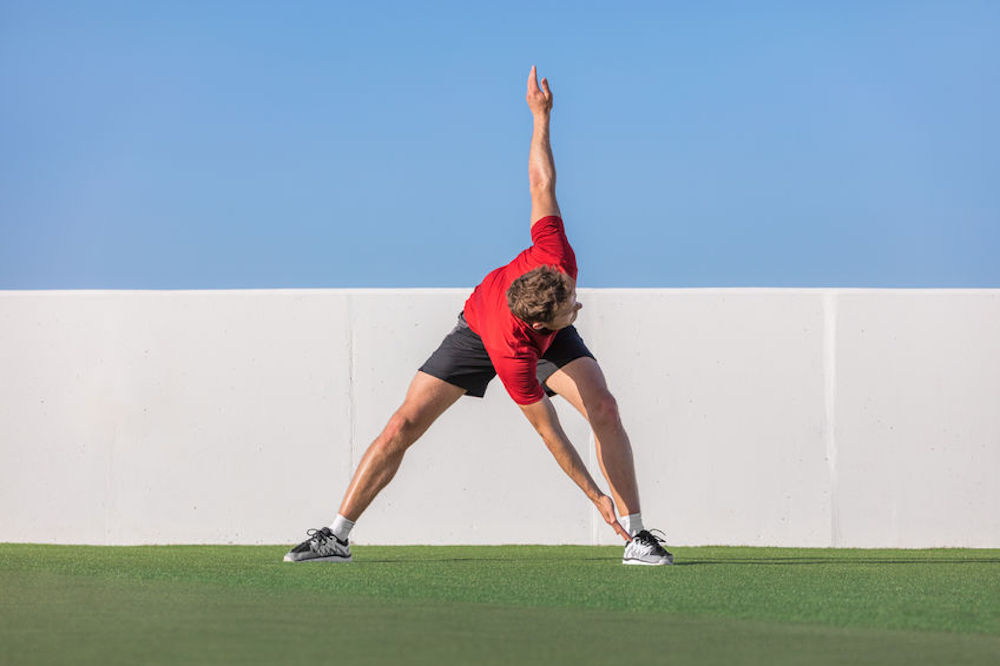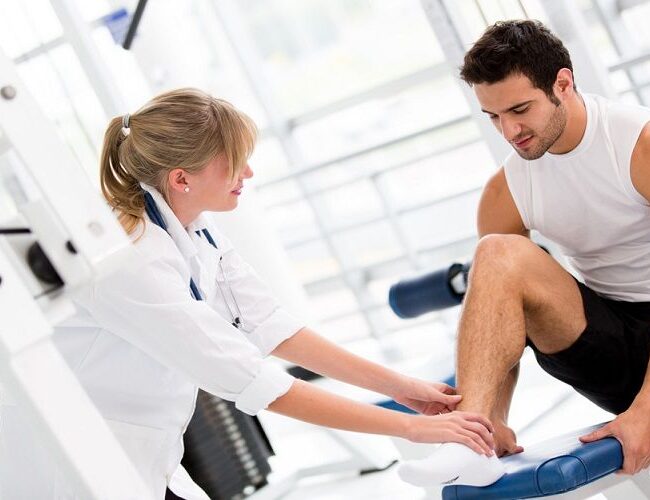- Sports Med U Newsletter
- Posts
- Return-to-sport testing post ACLR – How important are they?
Return-to-sport testing post ACLR – How important are they?
Sports Med U | Educating Minds, Elevating Potential
Likelihood of ACL graft rupture: not meeting six clinical discharge criteria before return to sport is associated with a four times greater risk of rupture
Kyritsis, P., Bahr, R., Landreau, P., Miladi, R. and Witvrouw, E., 2016. Likelihood of ACL graft rupture: not meeting six clinical discharge criteria before return to sport is associated with a four times greater risk of rupture. British journal of sports medicine, 50(15), pp.946-951..
In today’s letter
Overview of 6 key return to sport tests
Rapid Results = 90% and above limb symmetry index in hop tests and muscle strength is key for reducing re-ruptures
Professional takeaway = Aim to pass all tests to have the lowest risk of re-injury
Bite-size study - Infographic style!

Whats new in Sports Med U?
Check out our new article to learn about the role of dynamic stretching in injury reduction👇
Deeper look
Aim of study
To evaluate whether a set of objective discharge criteria, including muscle strength and functional tests, are associated with risk of ACL graft rupture after RTS.
Background info
The primary objective following ACL reconstruction (ACLR) is a swift and safe return to sport (RTS) at pre-injury levels while minimising the risk of re-rupture.
Specific criteria have been established to enhance the likelihood of a successful and secure RTS.
Commonly employed assessments include isokinetic strength tests, functional tests, clinical evaluations, and subjective questionnaires.
Ardern et al. found that 81% of ACLR patients return to any form of sport, with 65% returning to their pre-injury sports level, and only 55% resuming competitive sports.

The risk of re-injury (graft rupture) post-RTS ranges from 6% to 25%, while contralateral ACL injury risk varies from 2% to 20.5%.
Studies on ACL re-injury risk factors predominantly focus on non-modifiable factors such as gender, age, activity level, and anatomical characteristics.
Neuromuscular control and coordination are identified as critical, with poor neuromuscular control being a reported risk factor for ACL graft rupture.
Among 281 ACLR cases, younger athletes exhibit a higher risk of graft rupture compared to older athletes.
In a study involving 1820 patients after primary ACLR, younger athletes demonstrated higher activity levels and increased ACL re-injury incidence.
Gender differences in ACL graft rupture rates were not observed.
Quadriceps and hamstring strength are highlighted as contributors to a successful RTS.
The association between strength and the risk of ACL graft rupture remains uncertain.
Factors like poor knee alignment and neuromuscular control are frequently cited as predisposing factors for ACL re-injuries, but data on these aspects are limited, with only one study reporting findings.
Methods
A total of 158 male professional athletes who had undergone ACL reconstruction and successfully resumed their prior professional sports engagement were studied.
Before returning to sport, these athletes underwent a comprehensive set of discharge tests, including isokinetic strength testing at 60°, 180°, and 300°/s, as well as performance assessments such as a running t-test, single hop, triple hop, and triple crossover hop tests.
The athletes were subsequently monitored for ACL re-ruptures during their return to sport, with a median follow-up period of 646 days.

Study design
Immediately following surgery, athletes undergoing only ACLR were instructed to bear weight as tolerated without the use of a brace. If a meniscus repair was also performed, a brace limiting knee range of motion (0° to 90°) was applied for 4 weeks, with athletes advised to bear weight as tolerated.
Rehabilitation was structured into three distinct phases:
(1) Early,
(2) Intermediate
(3) Advanced
In the early phase, the primary focus involved controlling swelling, restoring range of motion, and activating the quadriceps and hamstring muscles.
The intermediate phase centered on optimising muscle strength, enhancing proprioception, and refining neuromuscular control. Additionally, a running progression program was initiated during this phase.
In the advanced phase of rehabilitation, the approach became sports-specific, with athletes engaging in various sports- and position-specific drills tailored to their specific activities.
Data collection
Strength:
Concentric isokinetic assessments were conducted on both the affected and unaffected quadriceps and hamstrings.
Athletes were tasked with completing five repetitions of knee extension and flexion for each leg at speeds of 60°/s and 180°/s, along with 20 repetitions at 300°/s.
Agility:
The study utilised single and triple hop tests focusing on distance assessment.
Measurement of the distance covered during one-legged jumps constituted the essence of these tests.
Athletes executed a series of hops with each leg three times, and only successful landings without balance loss were recorded.
Recorded results were used to calculate the limb symmetry index, derived by dividing the hop distance of the involved leg by that of the uninvolved leg, then multiplying the quotient by 100.


Results
Athletes (N=158) resumed their prior competitive level approximately 229 days post-surgery, with a range spanning from 116 to 513 days.
Among these athletes, 26 individuals (16.5% of 158) experienced an ACL graft rupture, and 11 (7.0% of 158) suffered a contralateral rupture of their native ACL.
The median duration from Return to Sport (RTS) to ACL graft rupture was 105 days.
No significant differences were seen between the groups with and without injuries.
Among the athletes with ACL graft ruptures, 73.1% had a hamstring graft, while 26.9% had a BPTB graft.
Of the total athletes (N=158), 73% were fully discharged, and 27% were not. Among those fully discharged, 10.3% (12 of 116) experienced an ACL graft rupture, compared to 33.3% (14 of 42) among those not fully discharged.
The Cox regression model highlighted the hamstring to quadriceps ratio at 60°/s and the completion of full discharge as risk factors for ACL graft rupture. A lower hamstring to quadriceps ratio correlated with a heightened risk.
Athletes who were not fully discharged exhibited a 4 times greater likelihood of sustaining an ACL graft rupture

Discussion
Athletes not meeting specific discharge criteria before Return to Sport and lacking full discharge from ACLR rehabilitation faced a four times higher risk of ACL graft rupture (73%) compared to those who returned after passing Return to Sport criteria (27%).
Factors that might influence the risk of graft rupture
Premature Return to Sport without meeting specific criteria is often considered a contributing factor to an increased risk of ACL graft rupture.
In this study, 70% of ACL graft ruptures occurred within the first 6 months post-RTS, extending previous findings to the Gulf Region population.
Athletes who did not meet discharge criteria in our study and experienced ACL graft ruptures may have had impaired neuromuscular function. Previous research indicated larger kinematic and kinetic asymmetries and a gait strategy similar to athletes early after ACL rupture in those not passing RTS criteria.
Neuromuscular asymmetries during dynamic movement may not only impact sport performance (resulting in RTS criterion failure) but also predict the risk of graft rupture.
A low hamstring to quadriceps strength ratio was identified as a risk factor for ACL graft rupture.
Quadriceps strength, a crucial aspect of ACL rehabilitation, is considered a prerequisite for successful outcomes.
Hamstring to quadriceps strength imbalances have been proposed as a potential risk factor for ACL injuries, although direct evidence is limited.
Hamstring muscles serve as agonists to the ACL, resisting anterior tibial displacement caused by quadriceps muscle forces at the knee.

Criteria for return to sport
The prevailing clinical guideline advocates against allowing Return to Sport within the initial 6 months post-reconstruction.
Grindem and colleagues reported a 50% reduction in knee re-injury risk (including all injuries, not solely ACL) for each month Return to Sport is delayed beyond 6 months. Knee function, assessed through Return to Sport tests, is integral to decision-making alongside the temporal criterion.
Various test batteries and discharge criteria are outlined for Return to Sport, assessing both function and strength, with recommended maximum bilateral deficits of 10-15% for clearance.
This study's Return to Sport criteria align with recommendations, suggesting a limb symmetry index of 90% in all hop tests and 85% in isokinetic strength tests.
Reliable test batteries guiding RTS can discriminate between individuals with ACL injury and healthy controls, yet no prior prospective studies have explored whether these criteria predict heightened risk of ACL graft rupture.
While our multiple regression analysis did not isolate hamstring weakness as a sole risk factor for graft rupture, univariate tests consistently indicated a trend of hamstring strength deficit associating with increased risk across all six tested strength variables.
The data propose that achieving sufficient hamstring strength and a balanced ratio with quadriceps strength is a crucial goal in ACL rehabilitation, warranting consideration as an RTS criterion. Nonetheless, confirmation of these findings is essential through future studie

Limitations of the study
The study has several limitations:
The examined cohort primarily consisted of professional male athletes, predominantly of ethnic Arab origin, constraining the generalizability of findings to diverse populations.
The study's sample size was relatively small (N=158), with a limited number of ACL re-injured athletes (n=26).
The variables tested were confined to strength and functional assessments, with no inclusion of movement analysis or neuromuscular assessments.
Implications for clinical practice
The natural strength difference between quadriceps and hamstrings should ideally be 50-80%, with the optimal goal being 70%
Emphasise the importance of athletes achieving an appropriate hamstring to quadriceps strength ratio before discharge, as this can significantly reduce the relative risk of ACL graft rupture by 4 times
Monitor (by testing every 5-6 weeks) and address any 10% decrease in the hamstring to quadriceps strength ratio as it corresponds to a 10.6x higher risk of sustaining an ACL graft rupture.
Limb symmetry index of >90% in hop tests x3 & quad strength / quad to hamstring strength ratio
<11 seconds in the T-Test
Complete on-field rehab (ball work,COD etc)
Prioritise meeting six specific objective discharge criteria before allowing athletes to return to sports post ACL reconstruction, significantly reducing the risk of ACL graft rupture.


Reply